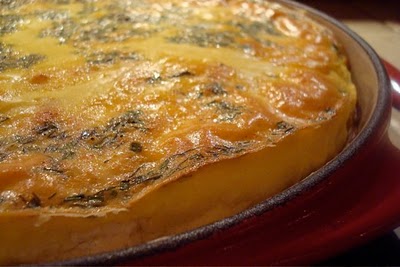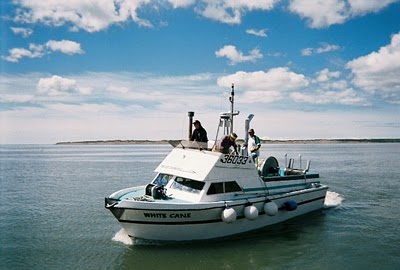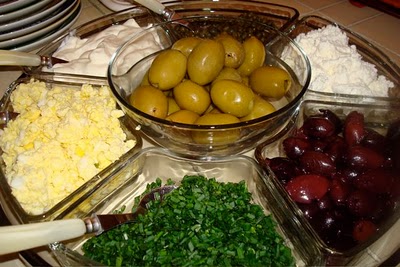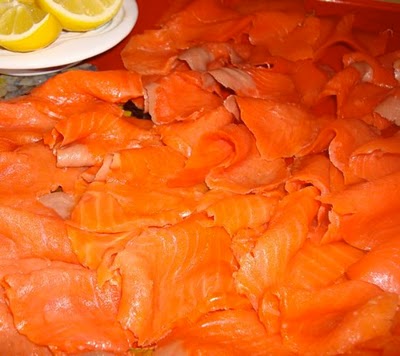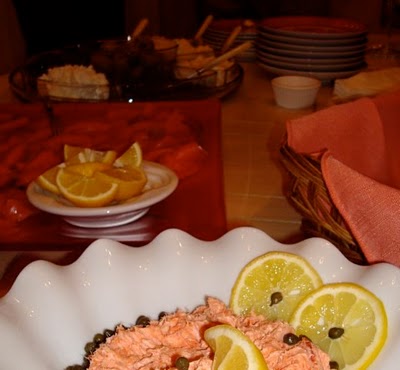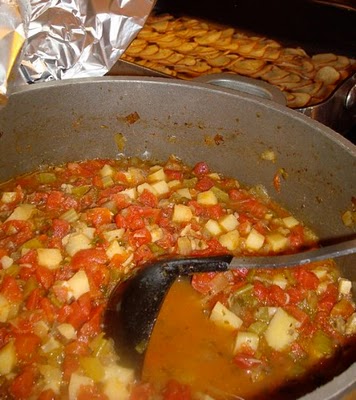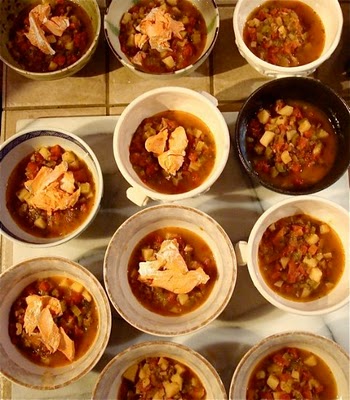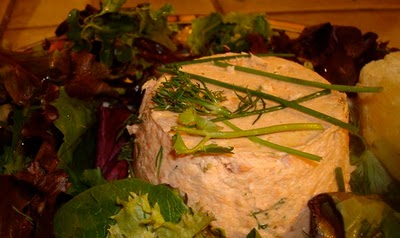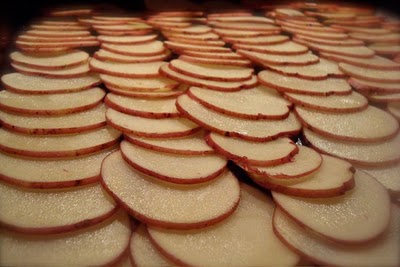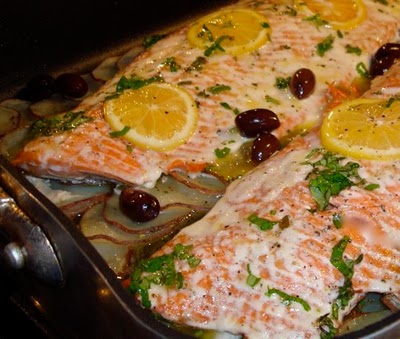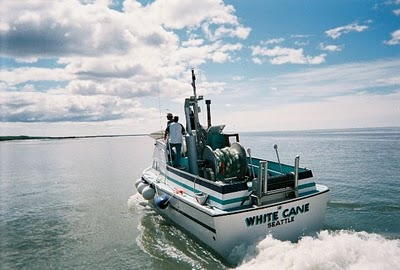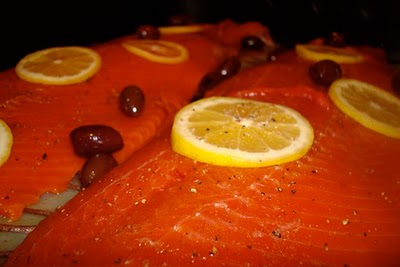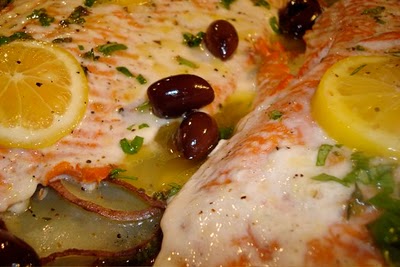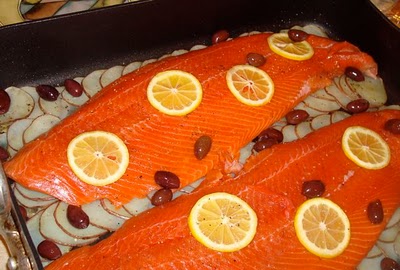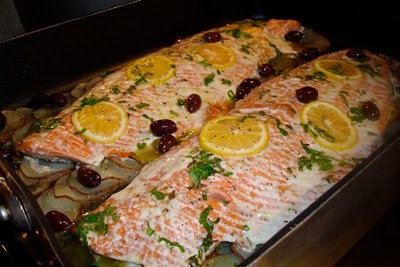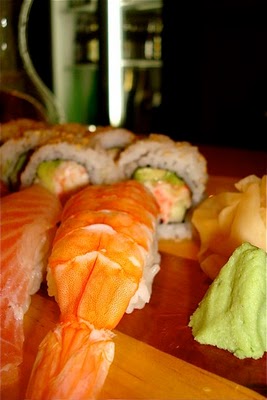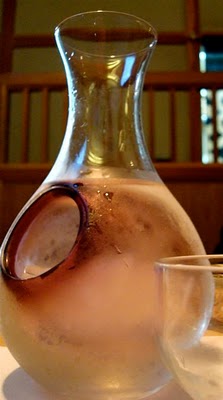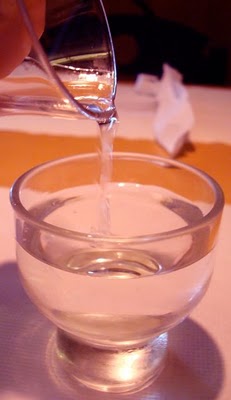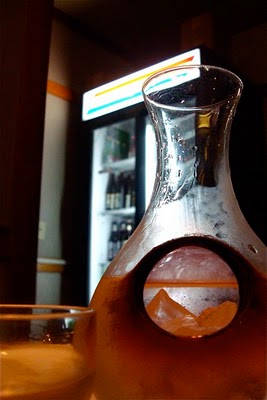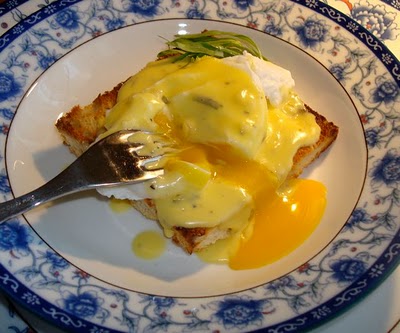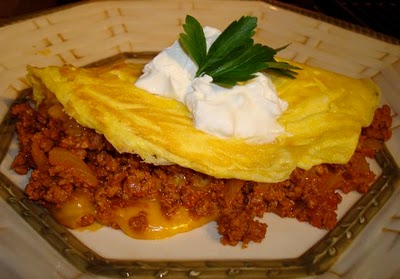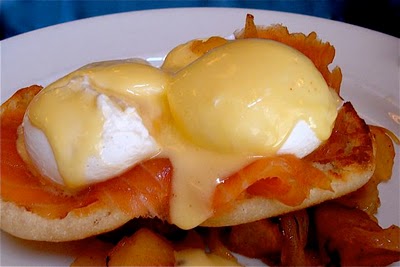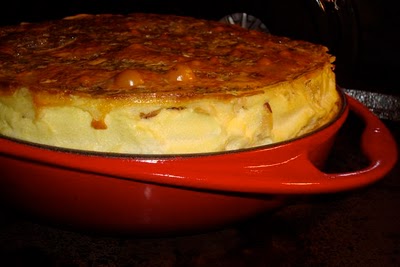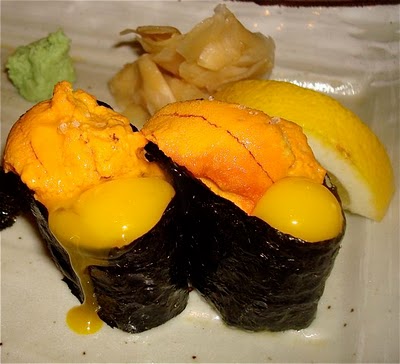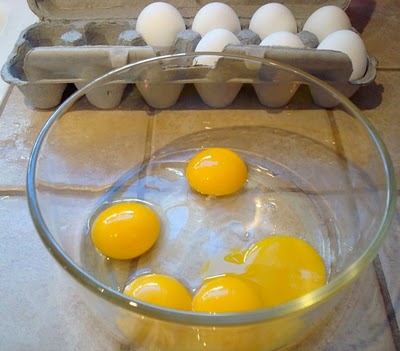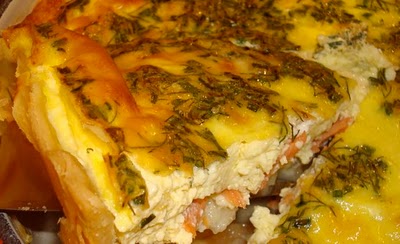
Ah yes, more salmon! This time it is the cold-smoked salmon baked in a quiche with goat cheese, fresh chives and dill.
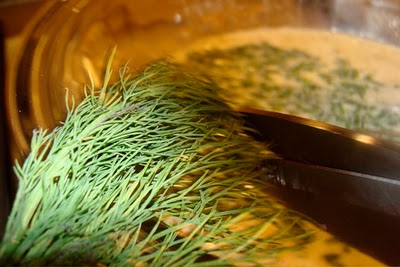
Fresh sniped dill added to the custard.
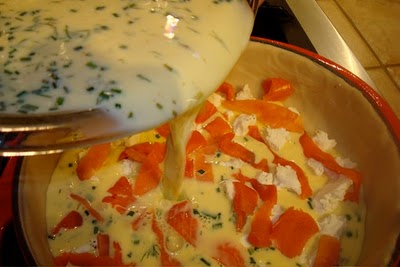
Pour the herbed mixture of eggs and cream over the goat cheese and salmon layered in the crust.
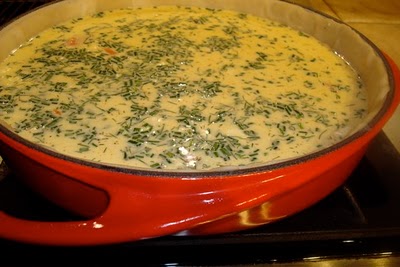
I use my Le Creuset Enameled Cast-Iron Tarte Tatin pan for making quiche as well as tarte tatin. This is a great pan!
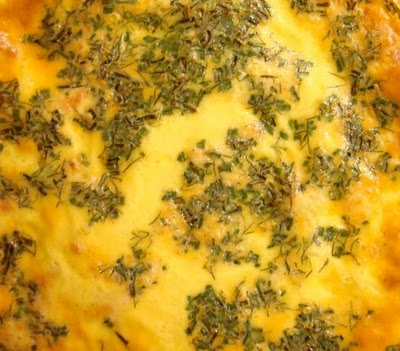
My ratio for quiche custard is:
- 5 whole large eggs
- 2 1/2 cups of warm light cream
- 1 T flour
- salt and pepper
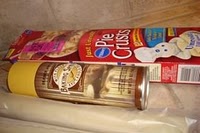
Uh, oops. How did that get in here?
I’m keeping no secrets from you: I used Trader Joe’s Baking Spray with Flour and Pillsbury Pie Crust 🙂
P.S. Happy Pi Day! 3.14.2008
My egg pie is a tribute to this mysterious and most important mathematical constant known as pi: 3.141592653589793238462643383279502884197169399375105820974944592307816406286208998628034825342117067982148086513282306647093844609550582231725359408128481117450284102701938521105559644622948954930381964428810975665933446128475648233786783165271201909145648566923460348610454326648213393607260249141273724587006606315588174881520920962829254091715364367892590360011330530548204665213841469…it’s an irrational and transcendental number that never terminates…
Pi Day has an official website: www.piday.org
Pi Palindrome: I PREFER PI
Did you know Albert Einstein was born on Pi Day 1879?

